Empowering students with language-based learning differences
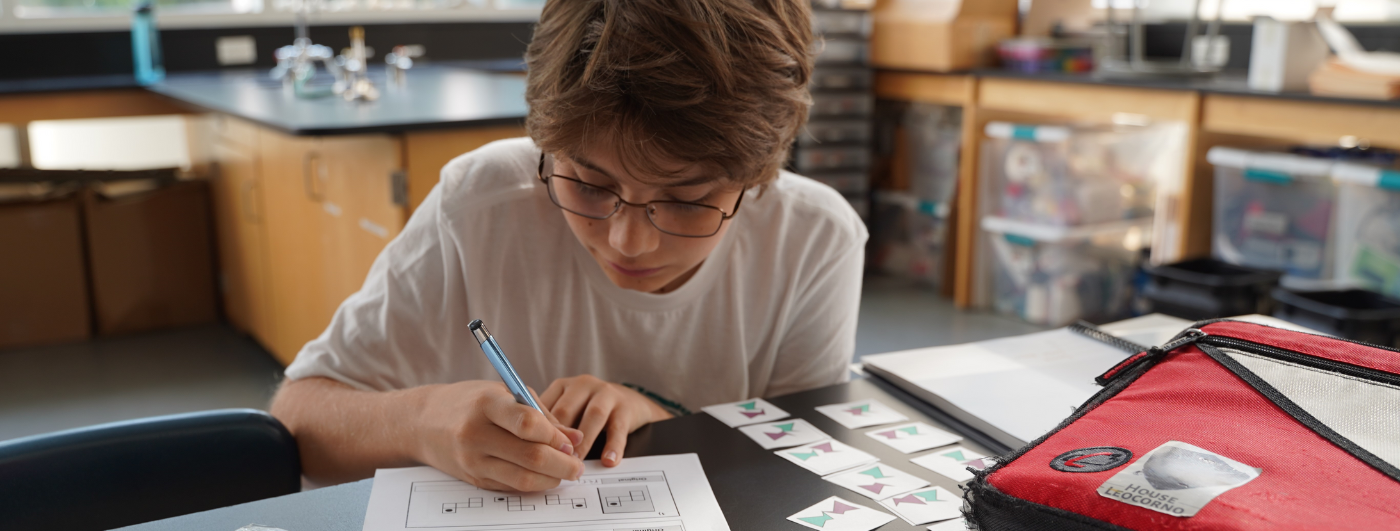
Siena Blog



The Siena School Blog
Discover, Learn, Celebrate, and Empower
Welcome to Siena's blog, your source for helpful, cutting-edge resources tailored to teachers, parents, and other advocates in the learning differences community. We are dedicated to providing a wealth of curated knowledge spanning various topics, ranging from dyslexia advocacy and awareness to classroom teaching strategies, heritage month profiles, and social and emotional health.
Discover innovative classroom strategies that inspire creativity and foster a love of learning.
Our commitment to social-emotional wellness ensures that we provide valuable insights into healthy student development and self-advocacy.
Discover resources, reading and podcast recommendations, volunteering opportunities, and more for parents in the LD community.
Our important heritage month posts highlight key people, offer reading and podcast recommendations, and more.
Women’s History Month Spotlight: Sally Gardner and Laurie Halse Anderson

Avg. read time: 3 min.
“Women from every background have long realized that an uneven playing field will never bring equality or justice. Many feel the critical need to speak up and work harder for fairness in our institutions and social interactions.” —National Women’s History Alliance
Women Writers with Dyslexia
The theme of Women’s History Month 2024 is Women Who Advocate for Equity, Diversity, and Inclusion. Siena celebrates Sally Gardner and Laurie Halse Anderson, two writers with dyslexia whose years of work in the arts have helped tell inclusive stories about diverse topics and characters.
As the National Women’s History Alliance reminds us,
During 2024, we recognize the example of women who are committed to embracing everyone and excluding no one in our common quest for freedom and opportunity. They know that people change with the help of families, teachers, and friends and that young people in particular need to learn the value of hearing from different voices with different points of view as they grow up.
Sally Gardner
Diagnosed with a learning difference at age 11, Gardner worked for many years in theatre set design and visual arts in her native England. She then pivoted to writing in her mid-40s. Her first book was The Strongest Girl in the World (1999), and her most recent is The Weather Woman (2023). Other notable Gardner books include I, Coriander, The Door That Led to Where, The Double Shadow, and Tinder. Her books include diverse character types and frequently overlap imaginative stories and historical or fairy tale settings.
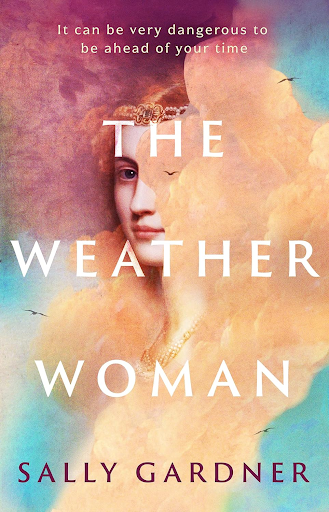
See Sally Gardner’s website for a full list of her books for young readers. She’s also a participating artist with artist and dyslexia advocate Gil Gershoni’s Dyslexic Dictionary project.
Disobedience is a part of being dyslexic. A refusal to be classified, to adhere to rules without answers. A defiance against mediocrity. To disobey is to believe in the power of imagination to alter situations. To leave those behind who tell you things must be done the same as they were always done. —Sally Gardner
Laurie Halse Anderson
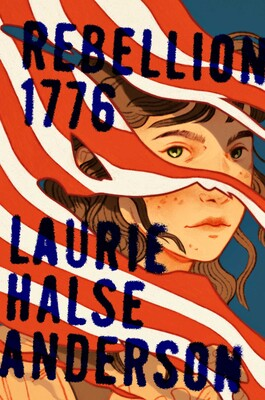
Diagnosed with dyslexia at a young age, Anderson received early intervention for reading and speech learning differences in school. To learn more about her background, see this series of short videos about her life and work from Reading Rockets, where Anderson discusses her schooling and use of haiku as her entry point into writing.
Anderson has written many picture books and young adult novels on a variety of historical and contemporary subjects, including censorship, sexual assault, and eating disorders. Her first book was Ndito Runs (1996), and her newest is Rebellion 1776 (forthcoming, October 2024). Other notable Anderson books include Chains, Shout, Speak (adapted into a movie in 2004), and The Hair of Zoe Fleefenbacher Goes to School.
See Laurie Halse Anderson's website for a full list of her young adult, historical fiction, and picture books, as well as a list of her many awards and honors. There are also educators’ guides and discussion questions for selected books.
I write about the things that teenagers have to deal with every day. Many of them have to cope with hard things, sadly. When they read books about similar experiences, they feel less alone. Those kids who are lucky enough to have wonderful, trauma-free lives can learn what it’s like to not be so lucky from my books. That helps them develop empathy and compassion. —Laurie Halse Anderson
Resources and Events for Women’s History Month
Here are some resources and local events commemorating Women’s History Month 2024:
- Women's History Month, American Women Writers—and Readers, Smithsonian American Women’s History Museum (includes information about their inaugural digital exhibition)
- Women’s History Month Events in Washington, DC
- Women's History Month Events | University of Maryland
- National Women's History Museum news, events, and resources
- On Sunday, March 3, the Military Women's Memorial is kicking off the month with a musical performance and program featuring the U.S. Army Band's chamber players.
Siena Resources
The Siena School blog has other Heritage Month spotlights related to innovative dyslexia education, including WNBA stars A’Ja Wilson and Jewell Loyd and Olympian Meryl Davis for past Women’s History Month posts.
See also our blog posts on Native American book recommendations, Mexican writer and activist Victor Villaseñor, Chicano artist Ignacio Gomez, and NFL star Rashan Gary, and others. Learn more about Siena’s commitments and ongoing initiatives for Diversity, Equity, Inclusion, and Belonging.
The Siena School, a national leader in dyslexia education, serves bright, college-bound students with language-based learning differences on campuses in Silver Spring, MD (grades 3-12) and Oakton, VA (grades 3-11).
Black History Month Spotlight: LeDerick Horne and Marcia Brissett-Bailey

Avg. read time: 3 min.
The theme of Black History Month 2024 is African Americans and the Arts. The arts in all their forms have always been instrumental to Black culture. Since art has been one of our core values from the beginning, Siena is highlighting a pair of contemporary Black writers with dyslexia, as well as sharing some reading and other resources to commemorate this important month.
Writer and Poet LeDerick Horne
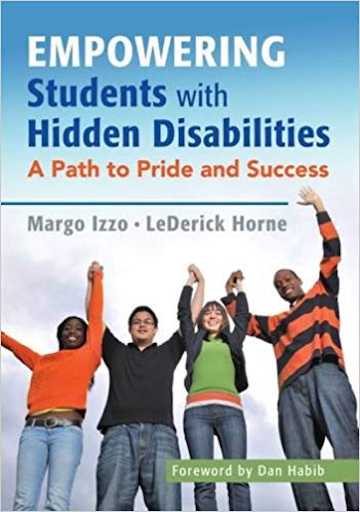
Poet, speaker, and advocate LeDerick Horne grew up in New Jersey and received an early dyslexia diagnosis (3rd grade). This laid the foundation for his decades of writing, speaking, and advocacy work on behalf of the LD community and Black identity.
Here are some key points in Horne’s career thus far:
- Horne did foundational work on the governing board of Eye to Eye, a nonprofit mentoring program for LD students. He’s on the advisory board for The National Resources for Access, Independence, Self-Determination, and Employment (RAISE), and he’s a member of the governing board for the New Jersey Coalition for Inclusive Education.
- Horne’s many honors and associations include LDA, Eye to Eye, NAACP, The White House, and the UN Convention on the Rights of Persons with Disabilities, as well as many presentations and media appearances.
- Horne coauthored Empowering Students with Hidden Disabilities: A Path to Pride and Success with Margo Izzo (2016), a guidebook collecting personal stories and strategies for teachers and families.
- He has also released two spoken word poetry collections, Black and Blue in 2011 and Rhyme, Reason, and Song in 2005 (both available on Apple Music). Horne has also been profiled on Poets List and in the short documentary Normal Isn’t Real, among many other platforms.
“What is funny—and ironic—for those of us who have learning disabilities is that the challenges that we were chastised for as children end up becoming these extremely valuable tools out here in the marketplace.” (LeDerick Horne)
Writer and Advocate Marcia Brissett-Bailey
Writer, speaker, and dedicated dyslexia and neurodiversity advocate Marcia Brissett-Bailey grew up in London and received her dyslexia diagnosis at age 16. “I no longer felt stupid” upon hearing about her learning difference, she shared in this article.
Here are some key points in Brissett-Bailey’s career thus far:
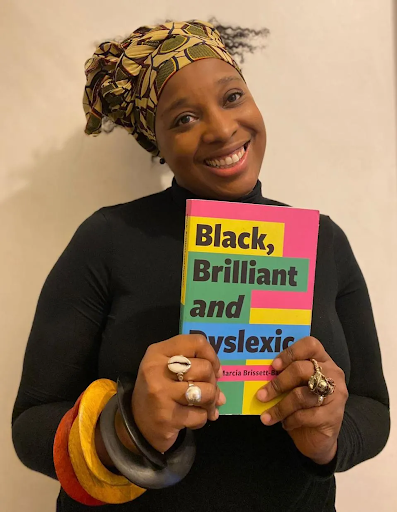
- She is currently Further Education Partnerships Lead at Diversity and Ability, leading their support and guidance for young people under 18, as well as their parents and caregivers, schools, and colleges.
- She edited Black, Brilliant and Dyslexic: Neurodivergent Heroes Tell their Stories (2023), a collection of first-person pieces from the Black dyslexic community from an international, intersectional perspective. In her words, “My book takes us on a journey to challenge structural racism and years of trauma on people who are marginalized by different forms of oppression and may only come forward when they feel safe to be their whole selves.”
- Brissett-Bailey edited a special issue of Contact magazine in October 2021 that highlights the important work of the British Dyslexia Association Cultural Perspective Committee.
- Among other places, Brissett-Bailey has been profiled in Forbes, Business Forums International, and British Dyslexia Association, as well as the Move Beyond Words podcast.
“Dyslexia is daily…but I wouldn’t be authentically me without dyslexia as it’s giving me so many advantages…in seeing the world through a creative lens. My high-level thinking, seeing the bigger picture visually, hyper-focus on my interests, seeing patterns others do not see and conceptual thinking.” (Marcia Brissett-Bailey)
Resources for African American Arts and Culture
See Arts Resources from the Smithsonian for a wealth of local events, spotlights, podcast recommendations, museum exhibits, and more commemorating Black History Month.
The Frederick Douglass National Historic Site in Anacostia has a series of events commemorating Black History Month and the 206th anniversary of Douglass’s birth. Those interested in books by Frederick Douglass can read his three autobiographies (Narrative of the Life, My Bondage and My Freedom, and Life and Times), as well as selected speeches and his only novel, The Heroic Slave.
In addition to the Douglass Historic Site, the Mary McLeod Bethune Council House National Historic Site and Carter G. Woodson Home National Historic Site in DC are also offering weekly programs and special events this month.
Lastly, some recent fiction, nonfiction, and poetry books by Black authors to look up include:
- Dr. Mariel Bruqué, Break the Cycle: A Guide to Healing Intergenerational Trauma
- Common, And Then We Rise: A Guide to Loving and Taking Care of Self
- Kia Corthron, Moon and the Mars
- Brianna Craft, Everything That Rises: A Climate Change Memoir
- Melania Luisa Marte, Plantains and Our Becoming
- Ayana Mathis, The Unsettled
- Ijeoma Oluo, Be a Revolution
- Clint Smith, Above Ground
- Jesmyn Ward, Let Us Descend
Fans of the recent Color Purple film can go back and read Alice Walker’s 1982 novel, as well as her foundational works In Search of Our Mothers’ Gardens (1982) and Possessing the Secret of Joy (1992).
Siena Resources
The Siena School blog has other heritage month spotlights related to innovative dyslexia education, including Native American book recommendations, Mexican writer and activist Victor Villaseñor, Chicano artist Ignacio Gomez, WNBA stars A’Ja Wilson and Jewell Loyd, NFL star Rashan Gary, and others. Learn more about Siena’s commitments and ongoing initiatives for Diversity, Equity, Inclusion, and Belonging.
The Siena School proudly serves students with dyslexia and other language-based learning differences in grades 3-12 on campuses in Silver Spring, Maryland, and Oakton, Virginia.
Spotlight on Victor Villaseñor

Avg. read time: 3 min.
“I wanted my children to see examples of real Mexican heroes, since I grew up thinking Mexicans could only wash dishes and work in the fields.” —Victor Villaseñor, on his book Rain of Gold
National Hispanic Heritage Month 2022
As part of National Hispanic Heritage Month this year, Siena is honoring Victor Villaseñor for his decades of successful work as a writer, speaker, and activist with dyslexia.
The National Council of Hispanic Employment Program Managers (NCHEPM) chose Unidos: Inclusivity for a Stronger Nation as the theme for National Hispanic Heritage Month 2022. Since 1988, National Hispanic Heritage Month has spanned September 15–October 15 each year. The September 15 start date coincides with the independence day anniversaries for several Latin American countries, including Chile, Honduras, Mexico, and Costa Rica.
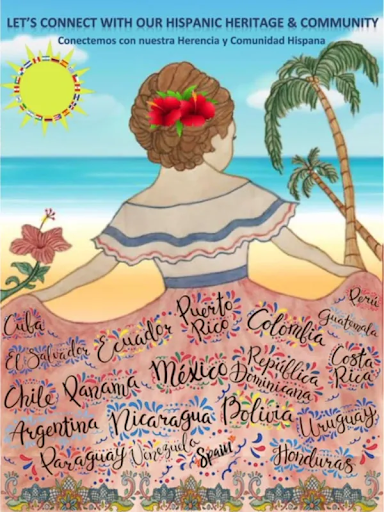
A Latin Writer with Dyslexia
Born in Carlsbad, California, in 1940, Villaseñor has been a prolific author of fiction, nonfiction, and children’s works since publishing his first books, Macho! and Rain of Gold, in 1991.
Perhaps unusually, Villaseñor was an avid reader and writer well into adulthood before he realized he’s dyslexic.
Villaseñor was diagnosed with dyslexia in his mid-40s, when his sons were also being tested. As he remembers his conversation with the learning specialist who diagnosed his sons and him,
“Do you see rivers between the words?” she asked.
“All the time,” I said. “I look at a page and I have to take a big breath to stop the rivers from coming down the page between the words from the left up high to the right down low. And you mean other people don’t see these rivers moving on the page?”
She shook her head, “No, they don’t. Oh, I’ve never had someone so far off the charts. It’s incredible, it’s a miracle that you ever learned to speak or read. And to write, to become a professional writer, is beyond my comprehension. How did you do it?”
I couldn’t talk anymore. Finally somebody understood what I’d gone through to become a writer.
Since then, Villaseñor has published numerous other books, including the memoirs Burro Genius and Crazy Loco Love and Mexican folktales for children such as The Stranger and the Red Rooster and Goodnight, Papito Dios. (See here for his bibliography.)
In addition to his prolific writing and public speaking, Villaseñor has also done a lot of advocacy and community building through such efforts as Snow Goose Global Thanksgiving, an annual music festival with shared food that takes place on the Sunday before Thanksgiving. Villaseñor also runs workshops for teacher training, Indigenous history, and biographical/autobiographical writing.
For more information about Villaseñor, see these videos on his website, as well as this profile from the Yale Center for Dyslexia & Creativity.
What makes me a special kind of author and public speaker is that I didn’t learn how to read until the age of 20. And because of that, I didn’t get educated into Western civilization and so I was able to retain my grandmother’s Indigenous Native American Sacred Knowledge. —Victor Villaseñor
National Hispanic Heritage Month Resources
There are ample online resources to learn more about National Hispanic Heritage Month and upcoming events and exhibitions commemorating it:
- Learn more here about National Hispanic Heritage Month from the Library of Congress and the National Endowment for the Humanities. The website includes resources for teachers and information about past and present exhibits of interest.
- See the United States Census Bureau’s overview of National Hispanic Heritage Month.
- Visit the National Archives website for a wealth of information about National Hispanic Heritage Month, including video resources, online exhibits, and digitized materials from Presidential Libraries.
- While the National Museum of the American Latino is still under construction, visit their website to learn more and watch a video message from Museum Director Jorge Zamanillo. In the meantime, the Molina Family Gallery at the National Museum of American History is open to the public and features multimedia storytelling and physical relics. Take a virtual tour here.
Resources from Siena’s Blog
Learn about Siena’s commitments and ongoing initiatives for Diversity, Equity, Inclusion, and Belonging. And, see Siena’s blog for related material from earlier this year, including spotlights on filmmaker Ann Hu from AAPI Heritage Month, poet Amanda Gorman from Black History Month, and Olympian and activist Meryl Davis from Women’s History Month.
The Siena School proudly serves students with dyslexia and other language-based learning differences in grades 3-12 on campuses in Silver Spring, Maryland, and Oakton, Virginia.
“The beginning of all wisdom is to understand that you don't know. To know is the enemy of all learning. To be sure is the enemy of wisdom.” —Victor Villaseñor, Burro Genius
College-Level Writing Tips

It’s always important for high school students to think about the skills, mindsets, and habits they’ll need as their academic careers advance. With many activities and events still canceled, this summer presents a good learning opportunity: high school students can take the time to build their writing and related skills to carry them through next fall.
Learning How To Write in College
Before coming to Siena, I was an English and First-Year Writing professor in the Washington, DC, area for 15 years, so I’ve worked with a lot of students on their approaches to writing and research. The most important thing that new college students can do is this: be open to learning the new and, sometimes, unlearning the old. I always reminded students on the first day of class that what worked well in high school wouldn’t necessarily work as well in college. This learning/unlearning ranges from time management and working independently, to structuring papers and performing online research.
In The Siena School's summer writing workshops for rising 9th–11th graders, Siena’s English teacher Maya Furukawa will focus on learning the steps in writing through multisensory strategies, graphic organizing, and assistive technology to compose persuasive writing while applying feedback to proofread and edit one’s own work. This summer could be an excellent opportunity to learn without the pressure of a grade, as this workshop will focus on skill building.
Developing Writing Skills in High School
Here are some more tips for writing in college, although it’s never too early for high school students to start developing their writing skills and work habits, as well as hone their skills in preparation for the next level:
![]() Embrace the processes of writing and research: note taking, outlining, planning, scheduling, brainstorming, drafting, reviewing, and revising. These are all important steps in the journey from idea to a finished project, and they can’t be done in a day. Always give the process time to develop. If an assignment is due in three weeks, use the three weeks to plan and draft it. Taking breaks in the course of a day, weekend, or week helps ensure quality writing. Bookmark these resources from the University of Chicago, Psychology Today, and Oregon State University to learn about how breaks help writers process information and improve their writing output.
Embrace the processes of writing and research: note taking, outlining, planning, scheduling, brainstorming, drafting, reviewing, and revising. These are all important steps in the journey from idea to a finished project, and they can’t be done in a day. Always give the process time to develop. If an assignment is due in three weeks, use the three weeks to plan and draft it. Taking breaks in the course of a day, weekend, or week helps ensure quality writing. Bookmark these resources from the University of Chicago, Psychology Today, and Oregon State University to learn about how breaks help writers process information and improve their writing output.
![]() Remember that A’s and other consistent successes in high school will not easily translate to A’s in college. Even if, for example, an assignment can be done all in one sitting the night before it’s due, there are no guarantees about its quality or fit for the rubric. Rushed writing also leads to avoidable errors (e.g., spelling, overlong paragraphs, wrong details, and missing citations) that affect assignment grades.
Remember that A’s and other consistent successes in high school will not easily translate to A’s in college. Even if, for example, an assignment can be done all in one sitting the night before it’s due, there are no guarantees about its quality or fit for the rubric. Rushed writing also leads to avoidable errors (e.g., spelling, overlong paragraphs, wrong details, and missing citations) that affect assignment grades.
![]() For students who’ve been taught the AP Essay format, be prepared to leave it in high school and upgrade your writing approaches. It’s designed as something to write all in one sitting without books or notes to consult, which is virtually the opposite of a college paper or other assignment. Think about it like an app that isn’t compatible with a new phone—the app worked well when it needed to, but now it’s time for something more advanced.
For students who’ve been taught the AP Essay format, be prepared to leave it in high school and upgrade your writing approaches. It’s designed as something to write all in one sitting without books or notes to consult, which is virtually the opposite of a college paper or other assignment. Think about it like an app that isn’t compatible with a new phone—the app worked well when it needed to, but now it’s time for something more advanced.
![]() Read the syllabus and assignment handouts closely, and then reread and review them when working. Professors sometimes give specific instructions on them that they don’t fully explain in class about the assignment length, number and type of sources to use, and format. Remember that professors still hold students responsible for following instructions even if they weren’t explicitly addressed in class.
Read the syllabus and assignment handouts closely, and then reread and review them when working. Professors sometimes give specific instructions on them that they don’t fully explain in class about the assignment length, number and type of sources to use, and format. Remember that professors still hold students responsible for following instructions even if they weren’t explicitly addressed in class.
![]() Always make sure to have whatever notes or book(s) needed for a writing assignment close by—preferably close enough to grab easily. Avoid trying to quote from memory or generally describing something from a book when a quote or something else concrete is better. Notes and books are especially great tools when they’re reread, so don’t hesitate to review a passage or chapter before writing about it.
Always make sure to have whatever notes or book(s) needed for a writing assignment close by—preferably close enough to grab easily. Avoid trying to quote from memory or generally describing something from a book when a quote or something else concrete is better. Notes and books are especially great tools when they’re reread, so don’t hesitate to review a passage or chapter before writing about it.
![]() Don’t hesitate to ask questions, but remember that professors might not give all the guidance or answers. They might ultimately expect students to figure out most of a problem independently after giving some advice. If students have questions about an assignment on Day 1 of working on it, they should ask them on Day 1.
Don’t hesitate to ask questions, but remember that professors might not give all the guidance or answers. They might ultimately expect students to figure out most of a problem independently after giving some advice. If students have questions about an assignment on Day 1 of working on it, they should ask them on Day 1.
![]() Use professors’ office hours—and not just during the week an assignment is due. In general, professors—especially first-year writing ones—like seeing students plan and outline their work, so meeting with one to talk through ideas and drafts can be helpful. It also shows good motivation and self-advocacy.
Use professors’ office hours—and not just during the week an assignment is due. In general, professors—especially first-year writing ones—like seeing students plan and outline their work, so meeting with one to talk through ideas and drafts can be helpful. It also shows good motivation and self-advocacy.
![]() Use all the available resources the college or university offers, such as the Writing Center and Disability Support Services. It’s always a good idea to look into academic support options as early as possible to avoid the beginning-of-semester rush.
Use all the available resources the college or university offers, such as the Writing Center and Disability Support Services. It’s always a good idea to look into academic support options as early as possible to avoid the beginning-of-semester rush.
![]() Understand that writing and editing are two discrete processes, so avoid the trap of trying to self-edit while writing. Scheduling your work is a great way to keep your writing and editing separate since it gives you ample time to do them. Write first to express thoughts, and then go back to edit, expand, and clean up. Reading papers out loud when editing is a great way to notice errors, SpellCheck misses (e.g., “defiantly” instead of “definitely”), long and awkward sentences or paragraphs, and other issues that affect an assignment’s grade. Using assistive technology like Read & Write and NaturalReader to have documents read aloud can also help students catch errors or awkward writing. (See this resources page from the University of Michigan for more options.)
Understand that writing and editing are two discrete processes, so avoid the trap of trying to self-edit while writing. Scheduling your work is a great way to keep your writing and editing separate since it gives you ample time to do them. Write first to express thoughts, and then go back to edit, expand, and clean up. Reading papers out loud when editing is a great way to notice errors, SpellCheck misses (e.g., “defiantly” instead of “definitely”), long and awkward sentences or paragraphs, and other issues that affect an assignment’s grade. Using assistive technology like Read & Write and NaturalReader to have documents read aloud can also help students catch errors or awkward writing. (See this resources page from the University of Michigan for more options.)
Learning to write well is a lifelong process. Teachers, professors, and tutors are continually developing their approaches to writing, research, and revision. Remember, too, that no parental communication with professors might be a big adjustment in college, so be prepared to self-advocate and be independent.
The more that students can start preparing themselves for writing and managing their time in college now, the more likely they are to succeed once the first assignment is due.
Education + Blogging = Edublogs
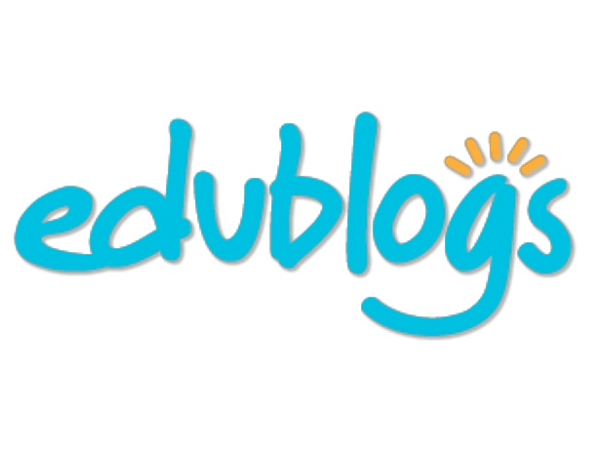
By Maya Furukawa, Middle School English Teacher at The Siena School
There is a multitude of uses for blogging that many of us interact with daily. Perhaps you write a parenting blog. Perhaps you read a cooking blog. Perhaps your best friend has a movie review blog with thousands of followers. Perhaps, like me, you write a blog just for yourself, tucked away in the depths of the internet.
Either way, blogging is a part of many people's daily lives. And it can be done at school.
What's defined as a "blog"?
According to Merriam-Webster's online dictionary, a blog is "a website that contains online personal reflections, comments, and often hyperlinks, videos, and photographs provided by the writer". There are teacher blogs, like Science Fix, which highlights classroom experiments. There are cooking blogs, like Food52. There are even blogs about blogging! And, of course, there is The Siena School's Blog on which you are reading this.
Why Blog in School?
In her post, "Why Teachers and Students Should Blog: 18 Benefits of Educational Blogging", Kathleen Morris states that "there can be so many educational benefits from having a well-run classroom blogging program." She goes on to list some of these benefits:
- Owning Your Content
- Creativity
- Home-School Connections
- Digital Citizenship
- Social Skills and Confidence
- Developing Thinking
- Reflections
- Classroom Community
- Global Connections
- Purposeful, Productive, and Fun!
Put simply, the benefits of blogging are what you make them. They allow students to express themselves through narrative writing, informative writing, analytical writing, and more. They provide a platform through which students may share not only their thoughts and feelings but, in certain cases, images and videos that go with them. They allow students to interact with one another (as well as the teacher!) in a different and interesting way. Perhaps most importantly, blogs provide students with a specific skill (blogging) which is supported by a plethora of additional skills (composition, editing, proofreading, writing for a specific audience) which they will continue to utilize in their adult life, both professional and personal.
Why Edublogs, Specifically?
Edublogs is precisely what it sounds like: a blogging platform intentionally centered around education. On its homepage, one can read the words, "EASY BLOGGING FOR EDUCATION" in bold, white letters. It allows the teacher to:
- Create student accounts
- Moderate the content of student blogs
- Control blogs' privacy settings
- Leave private comments on student writing
- Organize students into groups, and
- Monitor student progress
Because of the ample teacher control — and because one can set student blogs to be as private as they desire — this platform lends itself wonderfully to education.
What Does This Look Like in a Classroom?
In my English 6 and English 7 classes, students access and write on Edublogs every Monday-Thursday, as their warm-up at the start of class. They are provided with a variety of prompts — some personal, some academic — to which they respond. For example:
- Introduce yourself to an unfamiliar audience.
- Write a story about where you see yourself in three years.
- Compose a diary entry from the point of view of your research subject.
- Write a story (fiction or nonfiction) using at least six of your vocabulary words.
- Read "The Rose That Grew From Concrete" by Tupac Shakur. Then, write a poem about something beautiful coming from something mundane/plain.
I generally provide 5-10 minutes at the beginning of each class to work on these and two days for students to complete each blog post. In my classroom, students' blog privacy settings are set such that only other students in my Edublogs "class" can read their posts. Every few weeks, students take their regular blog-writing time to read and comment on their peers' posts.
Here are some examples of their work:
The Outcome
For the last two years, students in my classes wrote journal entries. These journals were composed 2-3 times per week and were written in response to prompts very similar to those being used on Edublogs this year. However, students are far more engaged in composing their blogs than they ever were with their journals. They are excited to read their peers' compositions and leave positive comments for them. After all, wouldn't you rather read blog posts than a document in Google Drive?
Interested in Learning More?



